When I first visited the Italian island of Sardinia in 1998 it was with a group of other wine salespeople with our focus understandably upon our lone supplier of Sardinian wines. During our journey here and in the remainder of southern Italy, I noticed the mentality of our hosts wasn’t far removed from their escape from the relative poverty that prevailed not so long ago in southern Italy; “more is better” was the motto to impress the honored guests. This sort of generosity can be gratuitous but occasionally I found culinary jewels. I filed this away, promising to return to Sardinia and discover more about this culture that seemed distinct, unique from that of the mainland.
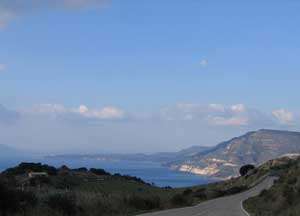
Sardinia is an autonomous province of Italy. Its population of 1.6 million people swells to 8 million in August, which doesn’t include the constant number of 4 million sheep. The four provinces are the most developed and touristed Sassari at the north, wild Nuoro on the east mostly though a slice of the Bosa valley reaching to the Sardinian sea extends this region’s reach, the breadbasket of Oristano to the west, and diverse Cagliari to the south. Forests dot the countryside though few range far. Once carpeted with cork oaks and other tress, Sardinia was nearly deforested in 800 A.D. to provide wood for ships, cooking, and winter heating. Cork production continues to be a mainstay of the island’s economy.
With 55 wineries on the island, only 10-12 of these names are recognized internationally. In 2001 four of these–Santadi, Sella & Mosca, Pala, and Argiolas–formed the Movimento Turismo del Vino to promote Sardinian oenotourismo. The first wine cooperative was born in the 1930s, the rest and most of the private producers were founded within the last 40 years.
In the 1970s nearly the entire production of Sardinian wine was sold in bulk quantities to France and northern Italy, at the time about 2,500,000 hectoliters. Today, as the past 30 years has seen a 60% decrease in Sardinian vineyards from over 60k ha to 25k ha, production is 800,000 hectoliters and focuses upon quality over quantity. During my December 2007 visit I learned from noted Sardinian wine journalist Pasquale Porcu that the widely grown Cannonau red grape for which Sardinia is famous, commonly thought to be Grenache brought by the Catalans centuries past, is actually a cross between vitis vinifera and a vitis selvatica vines. Many other discoveries await the wine lover when in Sardinia. The following are a good beginning.
Santadi
Raphaele Canni is the director of this 230-member cooperative working over 600 hectares in its Sulcis district. Sandy soils near the ocean, on which ungrafted vines are found, constitute a portion of their vineyards.
75% of the vines are Carignano which was brought to Sardinia 2500 years ago by the Phoenicians whose community of 15,000 once existed a few kilometers away from where the winery is today. It wasn’t until Santadi bottled it as a single varietal in 1967 that anyone gave Carignano recognition; before that it was all bulk sales. The real push began in 1981 when French vignerons broke into ships carrying bulk wine into France and destroyed it. This forced Santadi to focus upon their unique situation and develop a brand.
Giacomo Tachis was brought on as a consulting enologist in 1984 prefacing the slow international recognition which followed.
Squads of technicians work throughout the year with the growers regulating the use of fertilizers, pesticides, timing of green harvest, and the spraying of exclusively sulfur following veraison. Selections are made at the winery with four levels of quality determination with an average yield of 10 tons/ha. Future plans include isolating the original clone(s) of Carignano. Santadi produces wines, mostly red, with a good price/value ratio of 0.4-2.4EUR/kilo.
Near to releasing the 07s.
“Until mid-October vintages here are similar–big potential alcohol primarily–07 was optimal–no disease, perfect ripening conditions. 06 was a different story with some difficulties.”
Their ‘Antigua’, 100% of the normally dull Monica grape, is one of the best I’ve tasted offering lots of primary fruit character.
Pala
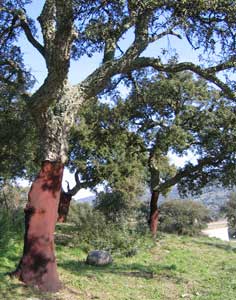
The Pala brothers are relatively new wine producers blending tradition and innovation promoting well on export markets since their first bottling in 1998. They own 50ha and, along with Dolianova, form the powerhouse in the Cagliari winegrowing district. Sandy, clay-loam soils dominate the vineyards. Their property includes a lovingly restored 8th century church.
The white grape Nuragus is formerly a ‘debt payer’ for the winegrowers as it was grown for bulk sales, but isn’t the case now. While Pala makes much of this grape their top performer is the lovely Vermentino, better known for its performance in the northeast of the island. Pala bottles their Vermentino as brands Crabilis, Stellato, and Entemari. Entemari, Sardinian for ‘seabreeze’, is a blend of half Vermentino, 30% Chardonnay, and 20% Malvasia of which less than half of the Chardonnay is fermented in French barriques. This is the finest example of a modern, blended Sardinian white wine. Pala also bottles the only single varietal Bovale, a red indigenous to the island, and well worth seeking out for its rich and slightly rustic purity reminiscent of a California Zinfandel.
90% of Pala wines are consumed on-trade. In light of this, when pressed if and when they’ll being packaging under an alternative closure, sales manager Fabio Angius hesitated then said, “as Sardinia is the largest producer of corks after Portugal, it would be a scandal if a Sardinian wine producer went to screwcaps. We have requests from many of our importers and are weighing our options.”
Dolianova
One of the biggest and smartest of coops possessing good knowledge of vineyard management. Sharing a winemaker with Cantina Pala, its 600 growers farm 1200 ha and produce four million bottles equally divided between red and white.
Asked of the challenges and differences working for both a coop and a private vintner winemaker Erculano posed, “work is much more complicated in a coop. A little company can decide to change methods and work more quickly. Changing things at a coop requires board meetings and other slow matters.”
Since the coop is seen as lower quality in level they decided to educate the growers to produce fewer but better grapes. They instituted rules in a manual that members must follow. They check the various vineyards to instigate harvest. “For this our quality is better than in the past.”
Average production is 8 tons/ha whereas 20 years ago it topped 20 tons/ha.”
Gostolai
Towering over the Nuoro town of Oliena at a height of 1400m is Mount Corrasi, famed for its 10,000 year-old grotto. Wines have been made in Oliena since the 15th century by Franciscans, later Jesuits. Oliena’s also home to the 20-year old Gostolai winery of Tonino Arcadu.
Gianni Lovicu, a nearby agricultural station researcher, assisted in explaining the local terroir. Soils are fossil-infused clay with only moderate porosity; Cannonau is sensitive to photosynthesis shutdown in dry conditions. Arcadu began using solely its own vineyards, now amounting to 3ha, but now contracts with local growers, too, for another 20ha.
Albarello (gobelet)-trained vines, each bearing an average of 1.5 kilos, are the norm here with some bearing as little as half a kilo. Vineyards are planted on a northeast exposure to avoid getting too much sun and therefore shutting down the leaf stomata during the long, hot summers. Bunches are hand-picked and brought to the winery at the end of September. Arcadu works with 90% Cannonau vinified in various manners to produce dry reds and roses.
Contini
Nephew Nicola, son Alessandro, and rotund, loquacious Dottore Paolo Contini maintain a treasure of old wines in a style rarely made with their Vernaccia di Oristano. Barrels dating to the 19th century litter the Contini cellar.
Consulting Professor Spanu has been engaged in research upon the Sacchromyces yeast which rest upon the wines here, much as they do in the Sherry and Jura regions. Varying barrel sizes are filled to 70-80% of their capacity and left with the bungs closed which allows the flor to die and be reborn with relative frequency (the Jerezanos prefer to create an environment where the flor might live more steadily and for a longer period of time). Their Antica Gregori is a solera dating back centuries. Most barrels are kept as one vintage, allowed to reduce naturally, then bottled as vintages or used as needed for the 20-year blend.
The most complex wine I’ve ever tasted from Sardinia is a new bottling of theirs, the Flor 22, made from flor-covered Vernaccia from a reduced vintage
1898 barrel, mixed with some 2003 Vernaccia passito, no sulfur added and bottled September 2007. Its breathtaking aromas and palate were reminiscent of an old, sweet Madeira although more high-toned and relatively tannic by comparison. Contini is a jewel of the wine world that should be on any serious Italian wine list.
Cantina di Gallura

On a 2007 visit, traveling northeast from the Oristano area, the weather became increasingly cloudy and windy. Windy mountain roads lead to the town of Tempio Pausania where this cooperative winery, (129 members farming 300ha) located on its northern outskirts, makes some of the best examples of Sardinia’s only DOCG–Vermentino di Gallura. “Vermentino is a grape tied to this territory,” said its director Dino Addis.
Cantina di Gallura was established in 1957 (“as was I”, the dashing Dino quipped) because of the need for Sardinians to work together to grow–even though the regional personality is individualist. Seated upon granite rocks and infused into the very nutritive-poor soil, the ‘island within an island’ that is this area is strikingly different from the rest of Sardinia.
Addis claims that the sea and the granite have great impact upon the aromas and structure of the wine. I agree, as this district provides some of the finest examples in the world of this too often overlooked grape.
Just outside the winery is a view of Mount Limbara, the second largest on the island. Diurnal swings are high, as much as 15°C in any day. Vermentino di Gallura’ DOCG must be a minimum of 12% and is best served with a variety of fresh fin and shellfish. Some Colli del Limbara IGT, comprised of 100% Nebbiolo, is produced under the brand name ‘Dolmen’ and is also worth seeking out. However, the winery’s Canayli Vermentino is likely their best wine.
Sella & Mosca
Any mention of Sardinian wine is incomplete without telling the story of Sella & Mosca, the island’s largest and oldest private winery. Once owned by the eponymous banking family, it’s now the property of the Campari drinks firm.
Corporate ownership, rather than squeezing profit from such a respected name, has allowed its managers to develop a formidable range of wine while respecting their position in the Sardinian winemaking community with a variety of programs designed to highlight the best of what Sardinia has to offer.
As the only commercial producer of the grape they’ve restored glory to the white Malvoisie de Roussillon with their savory and floral Thilion bottling.
Sella & Mosca’s top wine is the Cabernet Sauvignon/Cannonau blend Marchese di Villamarina. The current release, 2000, is a delicious, soft, medium-full body compromise between traditional and modern styles. I enjoyed it so much that I ordered (and paid for) a bottle when at a London restaurant two months later. As wine writers are accustomed to receiving free wine there’s no higher praise to be given.
GRAPES AND WINES
CANNONAU DI SARDEGNA DOC
Produced all over the island with under denomination Nepente (Oliena) Jerzu (Jerzu) Capo Ferrato (southeast)
VERMENTINO DI GALLURA DOCG
The only DOCG in Sardinia produced in Gallura in the northeast
VERMENTINO DI SARDEGNA
Same grape as Gallura, produced all over the island
CARIGNANO DEL SULCIS DOC
Produced in the southwest, and the islands of San Pietro and Carloforte.
NURAGUS DI CAGLIARI DOC
Produced in Cagliari area, south
MOSCATO DI CAGLIARI DOC
Produced in Cagliari area
MONICA DI SARDEGNA DOC
Could be produced all over the island but normally relegated to Cagliari.
MOSCATO DI SARDEGNA DOC
Under the denomination Tempio, with Cantina Gallura the only producer.
VERNACCIA DI ORISTANO DOC
Produced in the Oristano area, central-west coast.
ALGHERO DOC
A overarching DOC for Vermentino, Torbato, Cabernets, and other grapes.
Other grapes
NASCO
Mostly available – albeit rarely – around Cagliari area with some available in Sulcis and Alghero
BOVALE
Available in small quantities around the island and in blends, produced as a 100% varietal solely by Pala.
TORBATO
Available exclusively from Sella & Mosca, still and sparkling
MALVASIA SARDA
An aromatic clone of malvasia available in the Cagliari area and north of Oristano.
Top Wine Producers in Sardinia
- Cantine Gallura
- Contini
- Pala
- Santadi
- Sella & Mosca
Where to Eat when on Sardinia
Ristorante da Renzo
SS 131 Km. 99 Siamaggiore
0783 33658
www.darenzo.it
Ristorante Craf
Via de Castro 34 Oristano
0783 70669
Ristorante da Lucio
Via Lungomare 40 Marceddi-Terralba
0783 867130
Trattoria Maristella
Via Kennedy 9 Alghero
079 978122
Ristorante La Pitraia di Angelo & Arcangela
Sant’Antonio di Gallura
079 669381
www.angeloearcangela.com
Where to Stay
If you’re looking into holiday housing on the populated and touristy Costa Smeralda and want a quiet place to lay your head, check into the Residenza Capriccioli for a week’s stay. Francesco Depperu oversees his well spread-out 38 detached and semi-detached units (enough for 140 people) and, adjacent to the residences in June 2005, opened a bar, Jacuzzi, wading pools, restaurant, and cantine selling local products which include wines & spirits, foods, and handicrafts. Cappricioli is near enough to the Costa Smeralda hot-spots for a night out, but far enough away to allow for some leisurely, isolated walks along the coast. (0789 96016, www.cappricioli.it) A visit to his cousins’ nearby Luras winery can also be arranged.
Albergo Il Duomo is a beautifully restored 4* hotel in the center of Oristano’s old town. Owned by “da Banana” of Ristorante Craf (see below), this modern facility sports 10 small suites, some with terraces, and some of those that overlook the main street where the Sartiglia is held. All mod cons, including ASDL, are at hand along with a cozy vineria. (0783778061, www.hotelduomo.net)
For a break from the bustle of Cagliari, choose the Albergo & Ristorante Sa Prenda 30 minutes drive east in Villa San Pietro-Pula. Enrico and Arianna Oppo keep things family-orientated with a few toys scattered around the reception and a playground outside. The restaurant is reputed to be good, but my time wouldn’t allow. (070 907519, www.saprenda.com)
…and for very special occasions to both eat and stay.
Villa Las Tronas
On the southern edge of Sardinia’s Catalan city of Alghero perched upon a promontory is a hotel of remarkable beauty. The Hotel Villas Las Tronas is one of those few town hotels well worth a detour for its spectacular views and wonderful restaurant even if one doesn’t plan a stay in one of its sea-view rooms.
Built in 1880 by the La Spina family, Villa Las Tronas has been functioning as a hotel since 1960 when financial pressures forced the La Spina family to open up their residence to guests. Run entirely by two sisters until very recently, the youthful Dr. La Spina has become more involved with the day-to-day operations. The hotel rooms are well appointed, some with terraces. Two levels provide access to large, common terraces suitable for sunbathing or watching the sunset over the Med.
The remarkable views and elegant surroundings are enough for anyone wishing a relaxing place to wile away the hours while Alghero parties hard during the summer. But, there’s more here to be savoured. Las Tronas’ chef Tore del Rio has brought new life into this Grand Dame of Sardinia’s northwest coast, and Maitre’d Renzo Castangia’s briskly professional yet friendly manner has enticed food lovers worldwide to this genteel corner.
The polpettini affogati all diavola (baby octopus devilled style) had the perfect level of heat gracing the tiny, whole and locally-caught encephalopods. A whole sea bass was filleted tableside with aplomb only found at establishments steeped in “old-school” values. One of the island’s finest wine lists with numerous selections from Sardinia, the mainland of Italy, and throughout the world awaits you at Las Tronas.
Plenty of grass-covered grounds waiting for a pre- or post-meal romantic stroll cover the low bluffs leading out to the rocky seacoast. The La Spina’s child Raimondo is recognised as a prodigy, so if you’re lucky you may be serenaded by his brilliant piano work. If you’ve an urge for dancing steps away on an adjacent beach is a bustling bar to finish your night out.
Short piers jut out into the sea, providing mooring for small craft while allowing a place for land-loving sport fishers to relax.
If you’re a light sleeper concerned with the crashing of the waves keeping you awake at night, you can request a garden-view room or merely shut the double-paned windows to escape Neptune’s bellowing.
Rooms at Hotel Villa Las Tronas run between €105-279 with suites available. They may be contacted at www.hotelvillalastronas.com, tel. 079 981818, or fax 079 981044.
Text & photo: David Furer
Copyright David Furer & BKWine, December 2008
DAVID FURER discovered his passion for wine not in his native California but in 1991 while travelling in what is now his host country of England. He’s the author of Wine Places (Mitchell Beazley, 2005), a contributor to the annual guide Wine Report (Dorling Kindersley), Hugh Johnson’s Pocket Wine Book and the Which? Wine Guide; a writer for numerous magazines throughout the world. He’s led wine classes and guest lectured at the University of Chicago, Oxford and Cambridge universities, at Volkshochschulen in Germany, and California’s Professional Culinary Institute. David is a Certified Wine Educator and Advanced Sommelier.
(This feature first appeared in www.sommelierjournal.com and Merrick’s Media’s The Italian Magazine.)



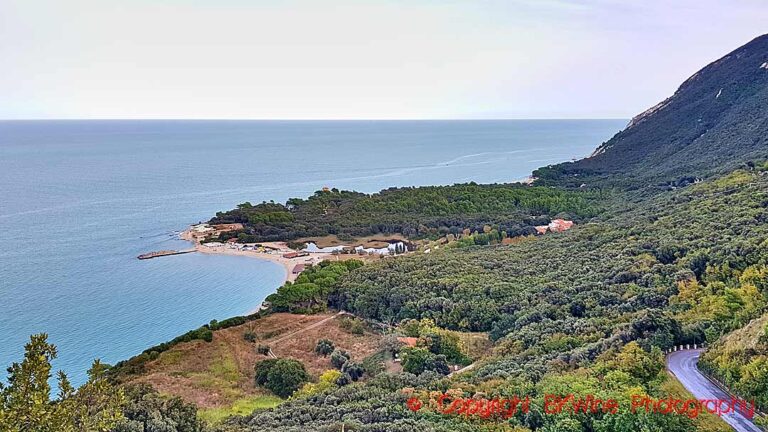
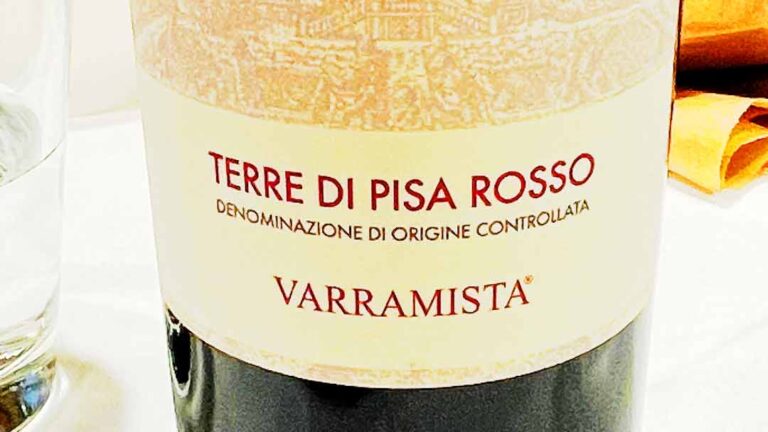
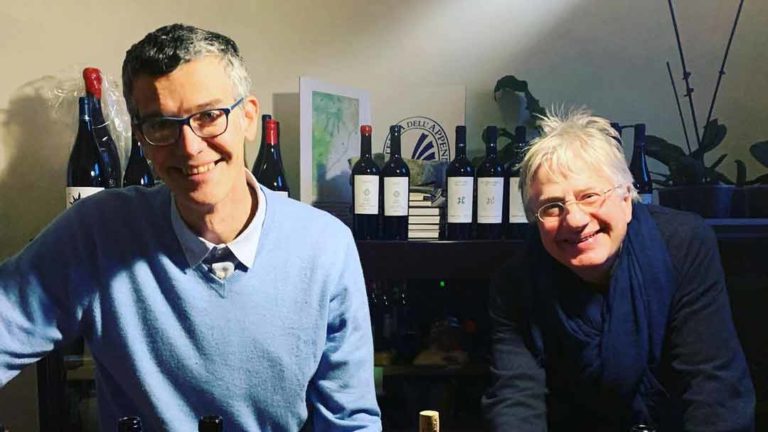





One Response
Hello David: I have read some our your pieces and am generally amazed at how well you
present (what appears to me) to be complex information in such a clear manner. And at the same time,ou include some environmental / historical and other ontext which gives the entries a lot of depth. Nice…k eep it up! m